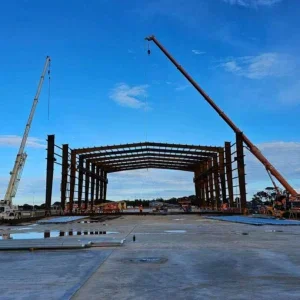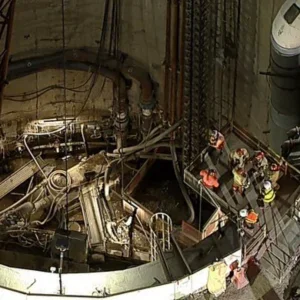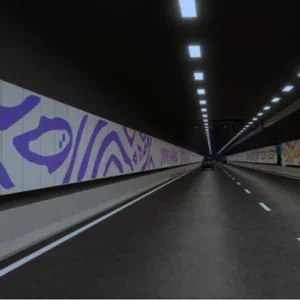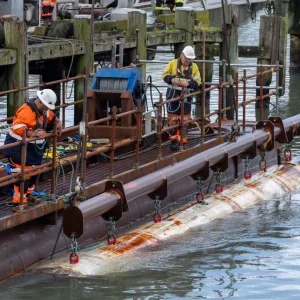The anticipated difficult syncline geology of the Piora Basin has been safely crossed by the first of two Herrenknecht TBMs on the Faido section of the Gotthard Base Tunnel, in Switzerland, which has less than 20% of excavation work left to be completed.
Separately, excavation of the access adit for client AlpTransit’s associated Ceneri Base Tunnel project was finished in early November at Sigirino, paving the way for the main tunnelling works.
The Gotthard project centres on twin, 57km long rail tubes. By the beginning of this month, excavation at Gotthard was 80.2% complete, equating to 120.5km from the total of 153.3km of the tunnels, galleries and passages to be bored. Last month, a total of 2.4km was excavated on the project.
On the Faido section, which is more than 14km long, a pair of 9.43m diameter Gripper TBMs (S-210, S-211) were launched in July and September last year. The contractor – a JV of Implenia, CSC, Impregilo, Hochtief and Alpine – had previously used the shield on the Bodio section. On the Faido stretch the most difficult ground was anticipated to be at the faulted Piora Basin about halfway along.
Geologists had debated about the construction risks related to the grainy dolomite and high water pressures in the 150m wide Basin, which were found by a 5.5km long exploratory adit driven by TBM in 1996. Water pressure of 150 Bar was met and within three hours the 100mm wide drill hole had discharged 1,400m3 of slurry. The shield was recovered and the adit closed with a 8m thick concrete plug.
The exploratory adit was excavated 350m about the level of the Faido running tunnels Subsequent probe drillings and the recent face drilling in the east tunnel, ahead of the S-210 shield, confirmed the dolomite rock to be hard, non-aquiferous and suitable for mechanised excavation.
Herrenknecht said the approach to the Basin involved major modifications to reduce the risk of downtime and the regular maintenance shift was dropped during the passage to minimise the problem of rock squeezing. The tunnel lining involved ribs at 1m centres directly behind the cutterhead, shotcrete to seal the face and then a 300mm thick layer of further shotcrete applied. Despite the risks identified during investigations, the TBM cleared the basin without problems.
The sister shield, S-211, driving the west tunnel is due to enter the Piora Basin stretch in the first quarter of 2009.
Separately, at Ceneri, the 9.7m diameter Robbins TBM last month completed the 2.4km long adit, which intersected an exploratory tunnel. The intersection already has the installation caverns that are the mid-route launch area for the two main running tunnel bores, each of which will be 15.4km long and excavated by both drill and blast, and TBM (T&TI, March, p10).
The Robbins TBM, launched in February, is a refurbished main beam shield that was previously used on the Karahnjukar hydropower project, in Iceland. It was increased in diameter from 9.6m and fitted with 19” for the JV contractor, including CSC, Lugano, Frutiger, Thun, Rothpletz, Lienhard+Cie, and Aarau. Geology along the adit alignment comprises schist, molasses and orthogneiss of UCS 30MPa-130MPa.
Breakthrough







